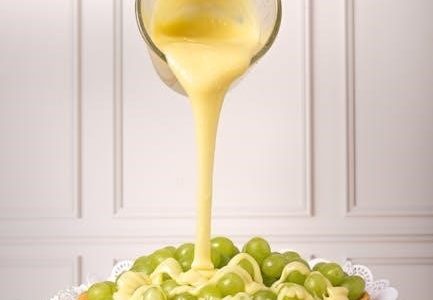Modernist Cuisine is a revolutionary culinary movement blending science, art, and tradition. It transforms cooking through innovative techniques and tools, offering a fresh perspective on flavor and texture.
1.1 Definition and Overview
Modernist Cuisine redefines cooking by merging science, creativity, and tradition. It emphasizes understanding the chemical and physical transformations of ingredients, enabling chefs to innovate and enhance flavors. This culinary approach, popularized by Nathan Myhrvold, Chris Young, and Maxime Bilet, relies on precision techniques like sous vide and foam creation. It challenges traditional methods, offering a systematic way to cook. Modernist Cuisine is not just a style but a philosophy that empowers cooks to experiment and achieve consistency. Its influence spans professional kitchens and home cooking, making it a cornerstone of contemporary gastronomy. The movement has revolutionized how we think about and prepare food.
1.2 Historical Context
Modernist Cuisine emerged from the intersection of culinary tradition and scientific inquiry. Rooted in the experimental spirit of 20th-century avant-garde cooking, it draws inspiration from pioneers like Ferran Adrià and Heston Blumenthal. The movement gained momentum in the 21st century, with Nathan Myhrvold’s groundbreaking work in the 2010s. By blending centuries-old techniques with cutting-edge technology, Modernist Cuisine represents a natural evolution of culinary arts, responding to advancements in food science and changing perceptions of dining; Its historical context is marked by a shift from traditional methods to a more analytical, innovative approach, reshaping how chefs and home cooks understand and prepare food.
1.3 Key Figures: Nathan Myhrvold, Chris Young, and Maxime Bilet
Nathan Myhrvold, a polymath and former Microsoft chief technology officer, is the driving force behind Modernist Cuisine. His culinary curiosity led to the creation of The Cooking Lab, where he collaborated with chefs and scientists. Chris Young, a scientist and chef, contributed his expertise in sous vide and food safety. Maxime Bilet, a culinary innovator, brought artistic and technical skills to the team. Together, they pioneered the integration of science and cooking, revolutionizing culinary practices. Their work has inspired chefs worldwide, making Modernist Cuisine a cornerstone of contemporary gastronomy.
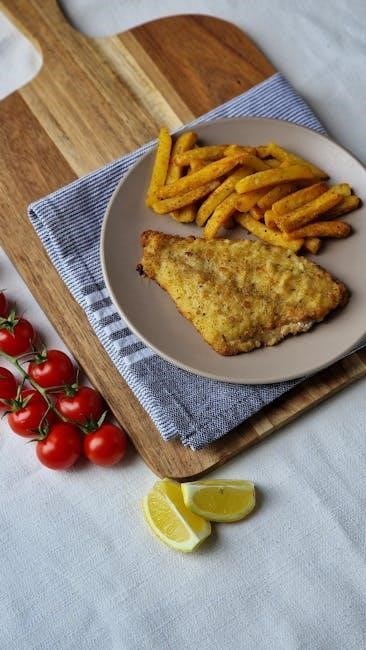
Modernist Cuisine Books
Modernist Cuisine books redefine culinary boundaries with science-inspired techniques. The six-volume, 2,400-page set by Nathan Myhrvold, Chris Young, and Maxime Bilet revolutionizes cooking, blending art, science, and innovation.
2.1 “Modernist Cuisine: The Art and Science of Cooking”
Modernist Cuisine: The Art and Science of Cooking is a groundbreaking six-volume set by Nathan Myhrvold, Chris Young, and Maxime Bilet. This 2,400-page masterpiece won the 2012 James Beard Award for Cookbook of the Year. It explores the science behind cooking, offering innovative techniques and stunning visuals. The book bridges culinary tradition with cutting-edge science, making complex methods accessible to both professionals and home cooks. With over 3,000 photographs and detailed diagrams, it revolutionizes the way we understand and prepare food, inspiring creativity and innovation in the kitchen.
2.2 “Modernist Bread: The Art and Science”
Modernist Bread: The Art and Science is a comprehensive guide to bread making, spanning over 2,600 pages. Authored by Nathan Myhrvold and Francisco Migoya, it delves into the science and history of bread, offering detailed techniques and troubleshooting. This book is designed for both professionals and home bakers, providing insights into flour, yeast, and dough dynamics. It includes innovative methods and tools, making bread production more accessible and precise. With stunning visuals and in-depth research, it sets a new standard for understanding and crafting bread, solidifying its place as an indispensable resource for bread enthusiasts worldwide.
2.3 “Modernist Pizza”
Modernist Pizza explores the science, history, and techniques behind one of the world’s most beloved dishes. Authored by Nathan Myhrvold and his team, it delves into the chemistry of dough, the physics of heat transfer, and the art of toppings. This book combines culinary expertise with scientific insight, offering both traditional and innovative recipes. It examines the global evolution of pizza and provides tools for crafting perfect pies at home or in a professional kitchen. With detailed photography and practical guides, Modernist Pizza is an essential resource for pizza enthusiasts, bridging the gap between tradition and modern culinary innovation.
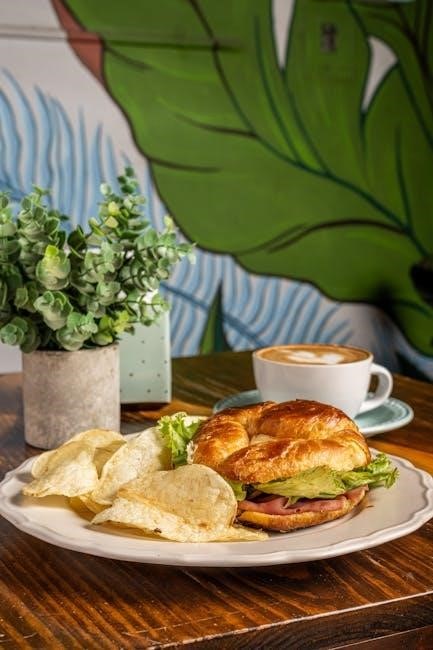
2.4 “Modernist Cuisine at Home”
Modernist Cuisine at Home is a groundbreaking cookbook designed for home cooks, offering a simplified approach to modernist techniques. With 456 pages, it provides over 200 recipes, scientific insights, and step-by-step guides to elevate home cooking. The book demystifies complex methods, making them accessible without specialized equipment. It focuses on practicality, allowing home cooks to experiment with modernist principles like siphoning, foams, and precision temperature control. This volume empowers home cooks to create high-quality, innovative dishes, proving that modernist cuisine is not just for professionals. It bridges the gap between culinary science and home cooking, inspiring creativity in the kitchen.
2.5 “The Photography of Modernist Cuisine”
The Photography of Modernist Cuisine is a stunning visual journey showcasing Nathan Myhrvold’s extraordinary food photography. This 312-page art book features captivating images that reveal the beauty and science behind modernist dishes. Myhrvold’s team uses innovative techniques to capture the essence of food, from the microscopic details to the artistic presentation. The book highlights the intersection of food, science, and art, offering a unique perspective on culinary creativity. It serves as both inspiration for chefs and a visual feast for food enthusiasts, demonstrating how photography can elevate the appreciation of modernist cuisine.
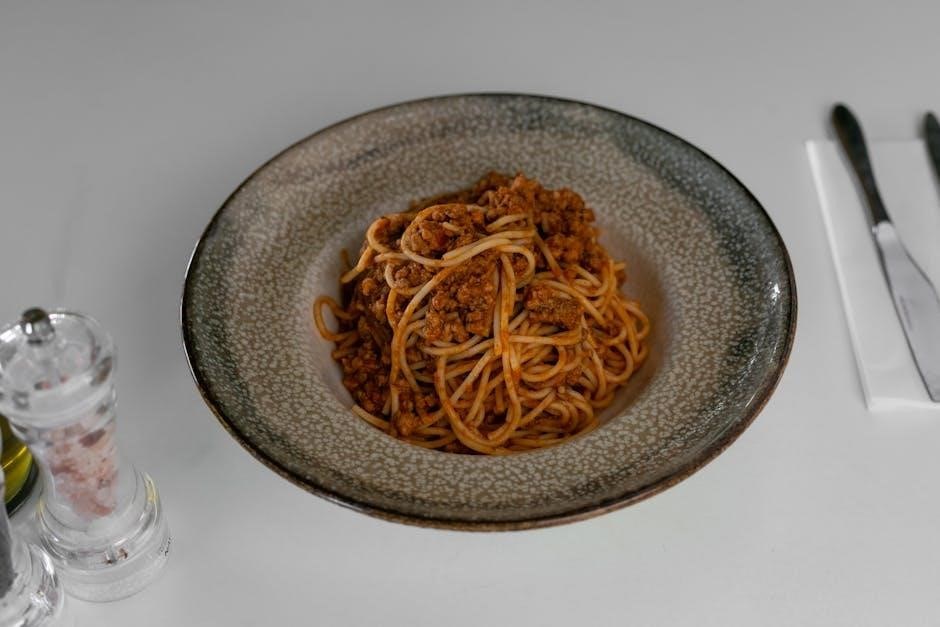
Authors and Their Contributions
Nathan Myhrvold, Chris Young, and Maxime Bilet pioneered Modernist Cuisine, blending science, innovation, and culinary expertise to redefine cooking techniques and inspire a new generation of chefs.
3.1 Nathan Myhrvold’s Role
Nathan Myhrvold is the visionary behind Modernist Cuisine, leading the interdisciplinary team that created the groundbreaking six-volume cookbook. As a scientist, inventor, and passionate cook, he merged culinary traditions with cutting-edge science, revolutionizing techniques like sous vide and foamification. Myhrvold’s meticulous research and innovative approach have redefined modern cooking, making complex methods accessible to both professionals and home cooks. His work challenges conventional culinary practices, emphasizing the importance of understanding the science behind cooking to create extraordinary dishes. Through his leadership, Modernist Cuisine has become a benchmark for culinary innovation, inspiring a global movement in gastronomy;
3.2 Chris Young’s Expertise
Chris Young is a cornerstone of the Modernist Cuisine team, bringing unparalleled culinary expertise and a deep understanding of food science. With a background in mathematics and physics, Young applies a scientific lens to cooking, pioneering techniques like sous vide and foamification. His collaboration with Nathan Myhrvold has been instrumental in shaping the movement, as he translates complex scientific principles into practical culinary methods. Young’s meticulous attention to detail and innovative approach have made him a key figure in modern gastronomy, inspiring chefs worldwide to embrace science-driven cooking. His work underscores the transformative power of understanding the chemistry behind everyday ingredients.
3.3 Maxime Bilet’s Innovations
Maxime Bilet, a visionary chef and scientist, has revolutionized Modernist Cuisine through groundbreaking innovations in bread and culinary techniques. His work in Modernist Bread explores the science of fermentation, dough development, and baking, offering unprecedented insights. Bilet’s contributions extend beyond cooking, as he emphasizes the importance of visual storytelling and food photography, capturing the artistry of Modernist Cuisine. His ability to merge science with creativity has inspired chefs globally, making him a pivotal figure in the culinary world. Bilet’s work continues to push boundaries, proving that innovation in cooking is limitless when science and art collide.
The Science and Technology Behind Modernist Cuisine
Modernist Cuisine leverages science and technology to transform cooking, employing precision temperature control, emulsification, and gelification to create innovative dishes with unparalleled texture and flavor accuracy.
4.1 Key Scientific Principles
Modernist Cuisine relies on fundamental scientific principles like emulsification, gelification, and the Maillard reaction to create innovative dishes. Emulsification stabilizes mixtures of liquids, while gelification uses hydrocolloids to set textures. The Maillard reaction enhances flavors through controlled browning. These principles, combined with understanding of pH levels and molecular interactions, enable chefs to craft dishes with precision and creativity. By applying these scientific concepts, Modernist Cuisine pushes the boundaries of traditional cooking, offering new ways to experience food.
4.2 Use of New Techniques and Tools
Modernist Cuisine introduces groundbreaking techniques and tools that redefine cooking. Sous vide machines, centrifuges, and ultrasonic homogenizers enable precise temperature control, texture manipulation, and ingredient processing. Techniques like spherification and foamification create visually stunning dishes. These tools and methods allow chefs to achieve consistency and innovation, transforming ingredients into extraordinary culinary experiences. By embracing technology, Modernist Cuisine bridges the gap between science and cooking, offering chefs unparalleled creative freedom.
4.3 Innovations in Food Preparation
Modernist Cuisine pioneers innovative food preparation methods, transforming traditional cooking. Techniques like spherification, gelification, and foamification create unique textures and visual appeal. Precision temperature control and dehydration redefine how ingredients are processed, ensuring consistency and flavor enhancement. These scientific approaches enable chefs to craft dishes with unprecedented creativity and consistency, revolutionizing culinary artistry.
Culinary Impact and Legacy
Modernist Cuisine has revolutionized culinary arts, inspiring chefs globally with its scientific approach. It has become a trusted resource, winning the James Beard Award and shaping modern gastronomy.
5.1 Influence on Professional Chefs
Modernist Cuisine has profoundly impacted professional chefs, offering a scientific and innovative approach to cooking. Its six-volume set, honored with the James Beard Award, has become a trusted resource for culinary excellence. Chefs worldwide embrace its techniques, such as sous vide and foamification, to create unique dining experiences. The books detailed insights into food science and presentation have inspired a new generation of chefs, fostering creativity and precision in professional kitchens. Renowned chefs have adopted these methods, integrating them into Michelin-starred menus and elevating modern gastronomy. This movement has not only reshaped cooking practices but also built a community of forward-thinking culinary professionals.
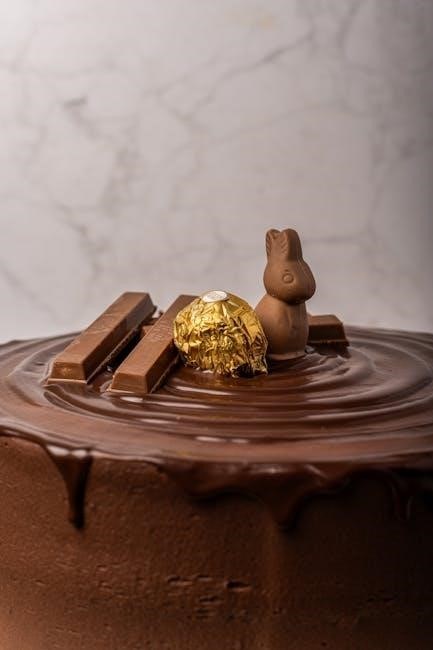
5.2 Popularity Among Home Cooks
Modernist Cuisine has gained significant traction among home cooks, democratizing complex techniques once reserved for professionals. Books like Modernist Cuisine at Home and Modernist Bread at Home simplify scientific methods, making them accessible. Home cooks appreciate the detailed recipes and tools, enabling them to create innovative dishes with precision. The movement empowers enthusiasts to experiment, fostering a sense of culinary adventure. Online forums and communities further support home cooks, sharing tips and ideas. This accessibility has bridged the gap between professional kitchens and home cooking, inspiring a new wave of creative and scientifically informed culinary practices at home.
5.3 Cultural and Social Impact
Modernist Cuisine has sparked a cultural shift in how people perceive and engage with food. By merging science and art, it has inspired a global community of chefs and home cooks, fostering creativity and experimentation. The movement has democratized access to high-end culinary techniques, breaking down barriers between professional and home cooking. Socially, it has fueled conversations about food innovation, sustainability, and the science behind cooking. The stunning visuals of Modernist dishes, often showcased in books and online, have turned food into a shared artistic experience, further amplifying its cultural and social resonance worldwide.
Tools and Equipment
Modernist Cuisine relies on specialized tools like sous vide machines, precision thermometers, and laboratory equipment such as centrifuges and dehydrators. These devices enable chefs to achieve precise results and innovation.
6.1 Essential Gadgets for Modernist Cooking
Modernist cooking requires specialized gadgets to achieve its innovative results. Essential tools include immersion circulators for sous vide, precision thermometers for exact temperature control, and blowtorches for caramelizing. Additionally, centrifuges and dehydrators are used to extract flavors and create unique textures. Vacuum sealers prevent oxidation and preserve flavors, while ultrasonic homogenizers blend ingredients at a molecular level. These gadgets, often borrowed from scientific labs, enable chefs to experiment with groundbreaking techniques, ensuring precision and consistency in their creations. They are indispensable for unlocking the full potential of Modernist Cuisine, allowing for the transformation of raw ingredients into extraordinary culinary experiences.
6.2 Use of Laboratory Equipment
Laboratory equipment plays a pivotal role in Modernist Cuisine, enabling chefs to achieve precise control over culinary processes. Centrifuges are used to separate ingredients into distinct phases, while ultrasonic homogenizers break down particles for smooth emulsions. Rotary evaporators and vacuum chambers allow for precise extraction and concentration of flavors without heat. These tools, traditionally found in scientific labs, bring unparalleled accuracy to cooking. They enable techniques like spherification, gelification, and foam creation, pushing the boundaries of culinary innovation. By adopting lab-grade equipment, Modernist chefs can experiment with molecular gastronomy, creating dishes that blend art, science, and flavor in extraordinary ways.
6.3 Specialized Cooking Tools
Modernist Cuisine relies on a range of specialized tools to achieve its innovative results. Precision temperature control devices, such as immersion circulators for sous vide cooking, ensure consistent heating. Thermomixes and pressure cookers are used for rapid cooking and texture manipulation. Vacuum sealers enable precise food packaging, while smoking guns infuse flavors without traditional smoking. These tools, often adapted from industrial or scientific contexts, empower chefs to explore new culinary possibilities. They are essential for techniques like foam creation, spherification, and gelification, making Modernist methods accessible to both professional kitchens and adventurous home cooks. These tools redefine the boundaries of culinary creativity.
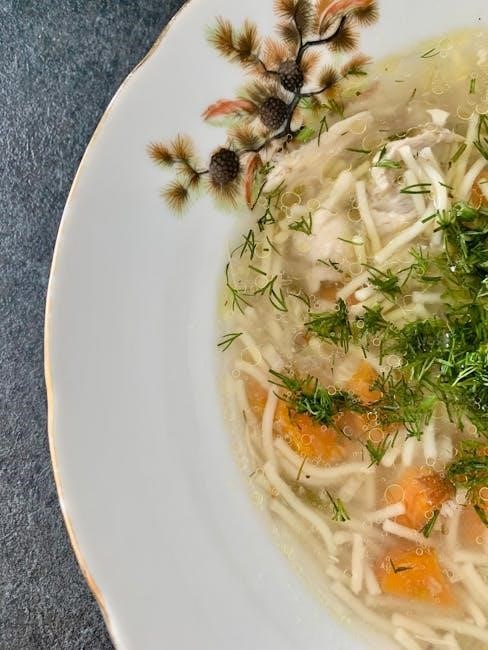
Modernist Cuisine in Professional Kitchens
Modernist Cuisine has revolutionized professional kitchens, inspiring chefs with its scientific techniques and creative approaches. It fosters innovation, enabling culinary excellence and transforming traditional cooking methods globally.
7.1 Adoption by Michelin-Starred Restaurants
Michelin-starred restaurants worldwide have embraced Modernist Cuisine, integrating its innovative techniques into their menus. Renowned establishments like Noma and Alinea pioneered the use of sous vide, foamification, and spherification, enhancing creativity and precision. These methods allow chefs to push culinary boundaries, creating unique dining experiences. The scientific approach of Modernist Cuisine aligns with the pursuit of excellence in Michelin-starred kitchens, enabling consistency and innovation. Restaurants like Ferran Adrià’s elBulli and Heston Blumenthal’s The Fat Duck have showcased its potential, inspiring a global shift in haute cuisine. This adoption underscores the transformative impact of Modernist Cuisine on the culinary world’s highest echelons.
7.2 Integration into Modern Culinary Education
Modernist Cuisine has become a cornerstone in culinary education, with many schools integrating its principles into their curricula. The comprehensive books by Nathan Myhrvold and his team provide both theoretical and practical insights, enabling students to master techniques like sous vide and foamification. Educational institutions worldwide use these texts to teach the science behind cooking, emphasizing emulsification, gelification, and other key principles. This integration bridges the gap between traditional culinary arts and cutting-edge scientific methods, equipping future chefs with innovative skills. The resources, including online forums and workshops, further enhance learning, ensuring students are well-prepared for the evolving culinary landscape.
7.3 Case Studies of Renowned Chefs
Modernist Cuisine has inspired renowned chefs worldwide, transforming their approach to cooking. Chefs like Ferran Adrià and Heston Blumenthal have embraced its scientific principles, creating innovative dishes. Nathan Myhrvold’s work has been a key resource, with many Michelin-starred chefs adopting techniques like sous vide and spherification. Restaurants such as Noma and Alinea showcase Modernist Cuisine’s influence, blending art and science. These chefs demonstrate how Modernist methods enhance creativity and precision, leading to groundbreaking culinary achievements and redefining modern gastronomy.
Modernist Cuisine at Home
Modernist Cuisine at Home simplifies complex techniques for home cooks, offering over 200 recipes and tips to incorporate modernist methods into everyday meals creatively and effortlessly.
8.1 Simplifying Complex Techniques
Modernist Cuisine at Home adapts advanced culinary methods for domestic use, making intricate processes accessible. Techniques like spherification or foam creation are simplified with everyday tools. The book guides home cooks in using affordable gadgets like siphons or thermomixes to achieve professional results. It breaks down complex steps into manageable tasks, ensuring clarity and success. By focusing on core principles, the book empowers home cooks to experiment confidently. This approach democratizes modernist cooking, proving that innovation doesn’t require a professional kitchen. Simplified techniques encourage creativity, allowing home cooks to explore new flavors and textures with ease and precision.
8.2 Essential Recipes for Home Cooks
Modernist Cuisine at Home offers a wide range of essential recipes tailored for home cooks, blending creativity with practicality. These recipes, from simple to advanced, introduce techniques like sous-vide cooking and foam preparation. Dishes such as modernist mac and cheese or perfectly cooked eggs showcase how science enhances flavor and texture. The book provides clear instructions and accessible ingredients, ensuring home cooks can replicate restaurant-quality meals. With over 200 recipes, it covers appetizers, main courses, and desserts, making modernist cooking approachable and enjoyable for everyone. These recipes inspire home cooks to experiment and innovate, bringing gourmet dining into their own kitchens.
8.3 Tips for Incorporating Modernist Methods
Home cooks can easily incorporate modernist methods by starting with simple techniques like sous-vide cooking or foam preparation. Invest in essential tools such as an immersion circulator or pH meter. Begin with basic recipes like modernist scrambled eggs or spherified ravioli. Experiment with ingredients like sodium alginate and xanthan gum. Use online resources for troubleshooting and inspiration. Keep measurements precise to ensure consistency. Don’t be afraid to fail—modernist cooking is about experimentation. Simplify complex dishes by breaking them into manageable steps; Practice timing and temperature control for optimal results. Embrace creativity and enjoy the process of reinventing traditional dishes with scientific precision.
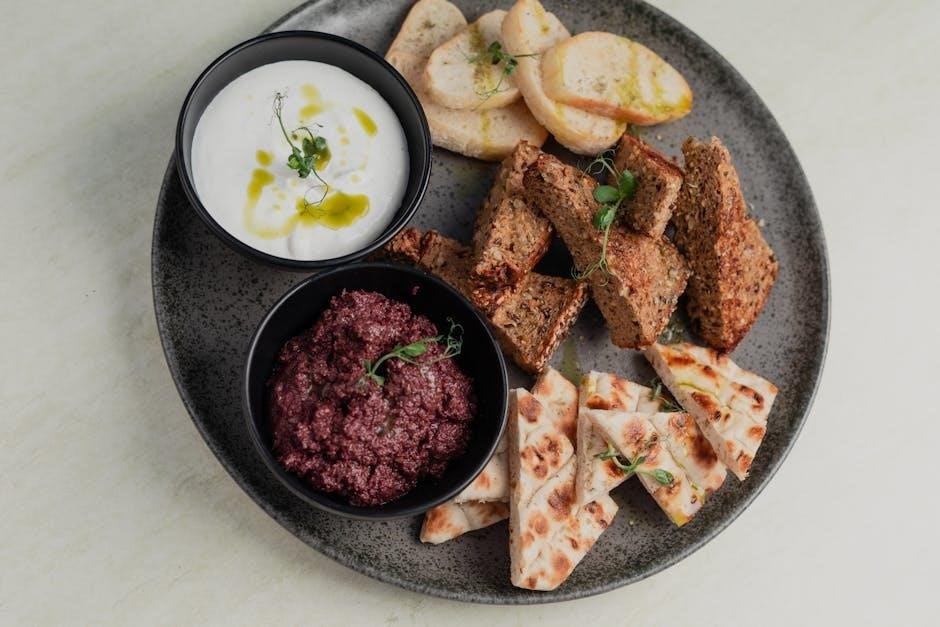
The Photography of Modernist Cuisine
Nathan Myhrvold’s photography captures the art and science of modernist cuisine, showcasing stunning visuals that transform food into a visual journey of culinary innovation and creativity.
9.1 Nathan Myhrvold’s Photographic Contributions
Nathan Myhrvold, a visionary photographer, has redefined food imagery through his work in Modernist Cuisine. His photographs capture the science and art of cooking, transforming dishes into visual masterpieces. Using innovative techniques like high-speed photography and unique perspectives, Myhrvold reveals the hidden beauty of culinary processes. His images, featured in books and galleries, have set a new standard for food photography, blending creativity with scientific precision. Myhrvold’s photographic contributions have inspired both chefs and artists, showcasing the intersection of gastronomy and visual art in a way that is both educational and breathtakingly stunning.
9.2 Techniques Used in Food Photography
The photography in Modernist Cuisine employs cutting-edge techniques to capture the essence of dishes. High-speed cameras freeze dynamic moments, while macro shots reveal textures and details. Stylists use natural light and minimalist compositions to emphasize food’s intrinsic beauty. Advanced post-processing enhances colors without altering reality. These methods create visually stunning, scientifically accurate images that educate and inspire, transforming food into art. Each photograph is a testament to the culinary process, making the series a benchmark for food photography. This approach ensures that every image is both informative and aesthetically pleasing, reflecting the innovation at the heart of Modernist Cuisine.
9.3 The Artistic Appeal of Modernist Cuisine Images
The images in Modernist Cuisine are more than culinary documentation—they are works of art. Nathan Myhrvold’s photography captures the beauty of food through innovative techniques, transforming dishes into visually striking compositions. High-speed photography freezes dynamic moments, while macro shots highlight textures and details. The use of natural light and minimalist styling creates a clean, modern aesthetic. These images not only showcase the science behind the cuisine but also evoke an emotional response, inspiring both chefs and art enthusiasts. The large-scale prints in The Photography of Modernist Cuisine gallery further emphasize their artistic appeal, making the series a benchmark for food photography and culinary art.
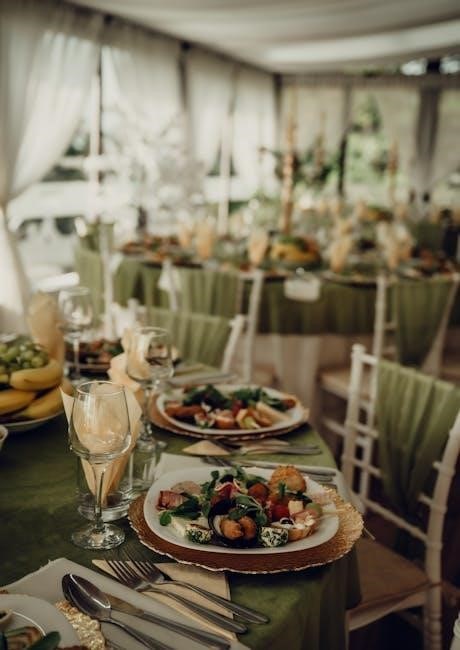
Resources and Further Reading
Explore comprehensive resources like Modernist Cuisine books, eBooks, and online forums. Discover workshops, seminars, and websites offering in-depth insights into modern culinary techniques and innovations.
10.1 Recommended Books and PDFs
For a deep dive into Modernist Cuisine, essential reads include Modernist Cuisine: The Art and Science of Cooking, Modernist Bread, and Modernist Pizza. These books, available in print and PDF, offer detailed insights into scientific techniques, ingredient exploration, and innovative recipes. The Photography of Modernist Cuisine is a visually stunning companion, showcasing artistic food imagery. Additionally, Modernist Cuisine at Home simplifies complex methods for home cooks. PDF versions of these titles are widely available online, providing accessible resources for both professionals and enthusiasts. Visit the official Modernist Cuisine website for authentic downloads and further reading materials.
10.2 Online Communities and Forums
Online communities and forums dedicated to Modernist Cuisine provide vibrant spaces for discussion, collaboration, and learning. Platforms like Reddit’s r/ModernistCuisine and specialized culinary forums offer insights, troubleshooting, and recipe sharing. These communities foster innovation, connecting professionals and home cooks passionate about scientific cooking. Many forums feature expert contributions, while social media groups like Facebook’s Modernist Cuisine Enthusiasts showcase creative applications of techniques. Additionally, the official Modernist Cuisine website hosts discussions, Q&A sessions, and updates on the latest trends. These resources are invaluable for anyone exploring the intersection of science and cooking.
10.3 Workshops and Seminars
Workshops and seminars on Modernist Cuisine offer hands-on learning experiences, led by experts like Nathan Myhrvold and his team. These events explore scientific techniques, ingredient innovations, and tool usage, catering to both professionals and enthusiasts. Topics range from sous vide and foamification to advanced bread-making. Many workshops are hosted globally, providing interactive environments for culinary experimentation. Notable programs include those at The Cooking Lab and collaborations with culinary schools. These sessions inspire creativity and foster a deeper understanding of Modernist principles. For those interested, Modernist Cuisine’s official website regularly updates their workshop schedule and registration details.

